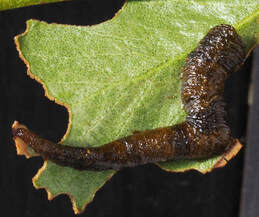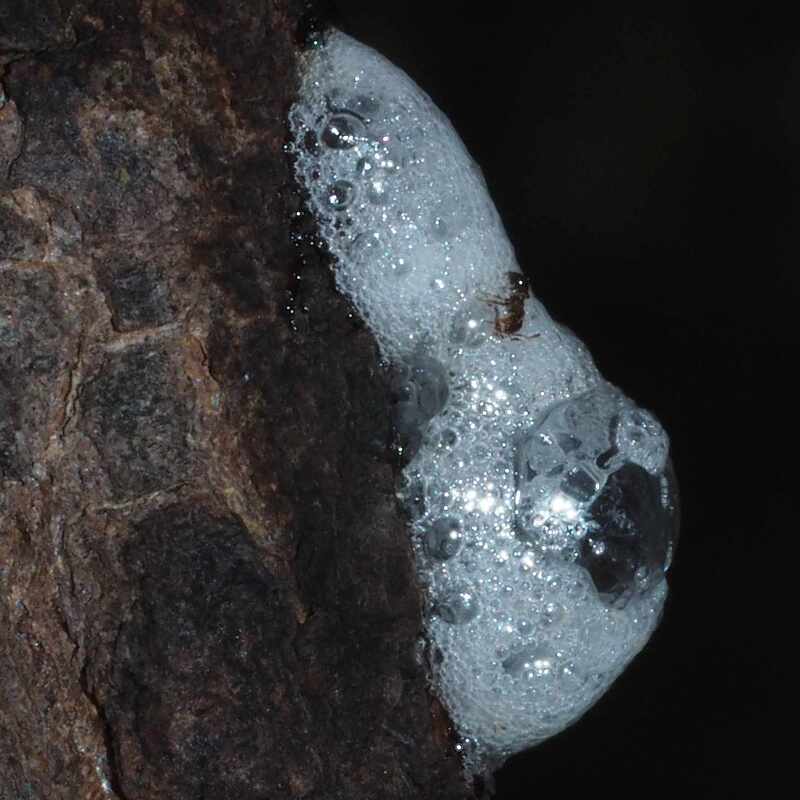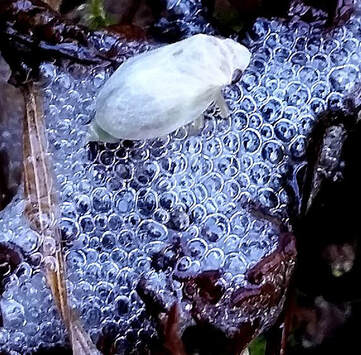| Greetings fellow Foxies, Last week I noticed small striped tubes that exuded a horrible reddish liquid on moort mallets in the arboretum. After great detective work leading to a diagnosis of a parasitised caterpillar, I was quickly put right on Facebook: it’s actually a tube spittlebug (froghopper group). Keen to learn more I googled madly and became very confused, but finally found this simple guide to the world of bugs. |
Incidentally hoppers in turn are grouped with cicadas into suborder Auchenorrhyncha (because adults have hard forewings which held roof-like over the membranous hind wings on the back.
And all of these are grouped with aphids, scales and true bug because they all have piercing sucking mouthparts and go through 5 nymphal stages to the winged adults (Order Hemiptera).
Spittlebugs also tap into the deeper xylem channels that transport water and minerals up from plant roots and provides them with more liquid to make their spit.
There are two groups of spittlebugs.
Family Clastopteridae: Machaerotinae - Tube Spittlebugs (above). Their nymphs build and live in tubes.
Family Aphrophoridae Spittlebugs. Nymphs produce bubbly 'spittle' on the stems of shrubs or small trees to protect them. Check for them before cursing those uncouth bogans who expectorate on our plants


